Forcing bulbs is fairly easy to do in soil. To force bulbs in water, a little extra effort is required. The key is getting water to the roots while not allowing the bulb itself to sit in water. This takes a bit of attention and may not be feasible for busy gardeners. However, bulbs growing in water have a unique appearance and require minimal supplies. Bulbs that work well for forcing are daffodils, tulips, snowdrops, hyacinth, and crocus.
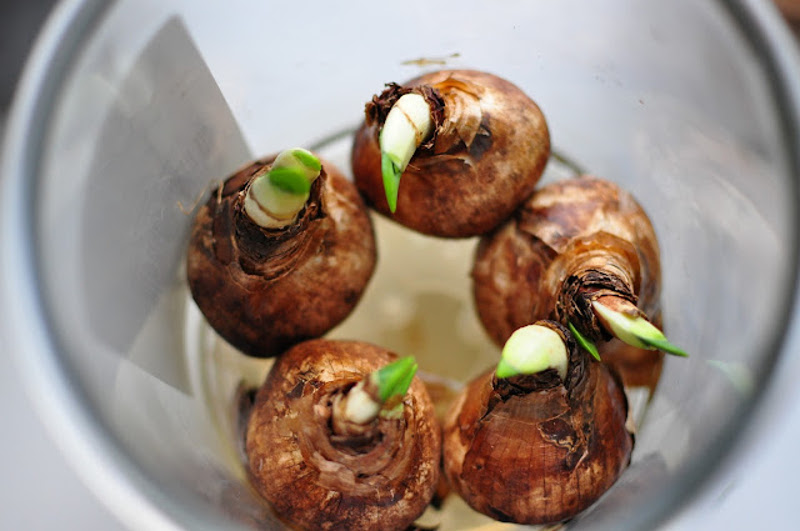
These are paperwhites (Narcissus tazetta) nestled in a glass vase specifically designed for forcing bulbs, also known as a bulb jar. The vase contains a little ridge near the bottom and a plastic "rack" for the bulbs to sit on. If you don't have a vase like this, add some stones in the bottom of a vase to serve as a rack.
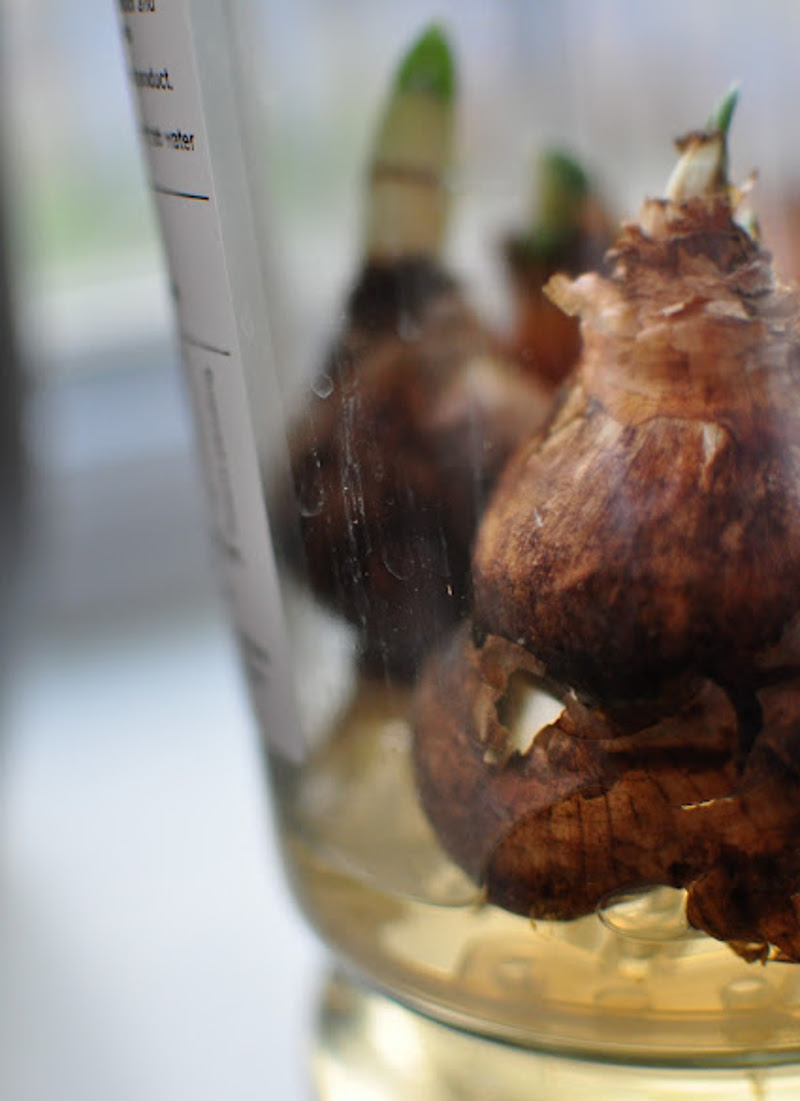
You can just barely see the plastic rack directly under the bulb. Notice a few things in this photo above:
- There is a green tip on the bulb, which means the bulb is healthy and growing.
- The point of the bulb is facing up and the roots are going down - that is essential!
- The bulb is peeling a bit - that is OK! It is still very well skinned.
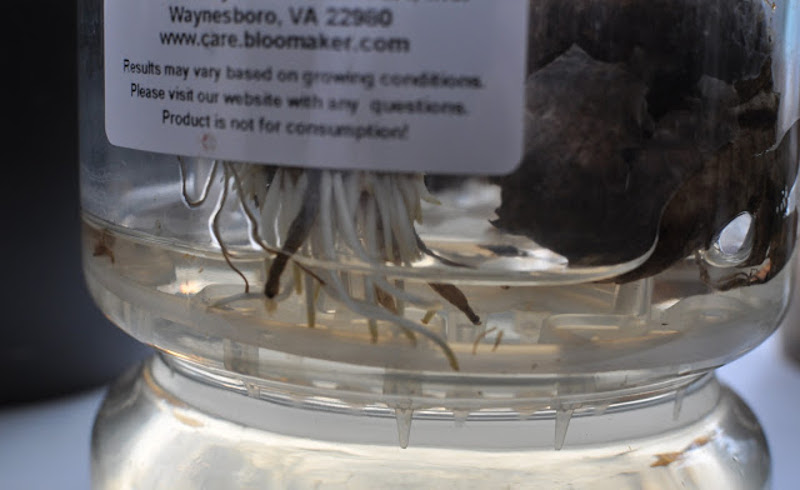
When you first start bulbs in water, allow them to sit in water just long enough for the roots to "wake up" and start getting white. The roots start out crumbly and dry like an onion; however, they will reach for the water and become plump. At this point, do not let the bottom of the bulb sit in water, which will cause it to rot. Adjust the water level so that the roots can still reach the water, but the bottom of the bulb stays dry. Continue to top off the water level as needed to keep the roots submerged.
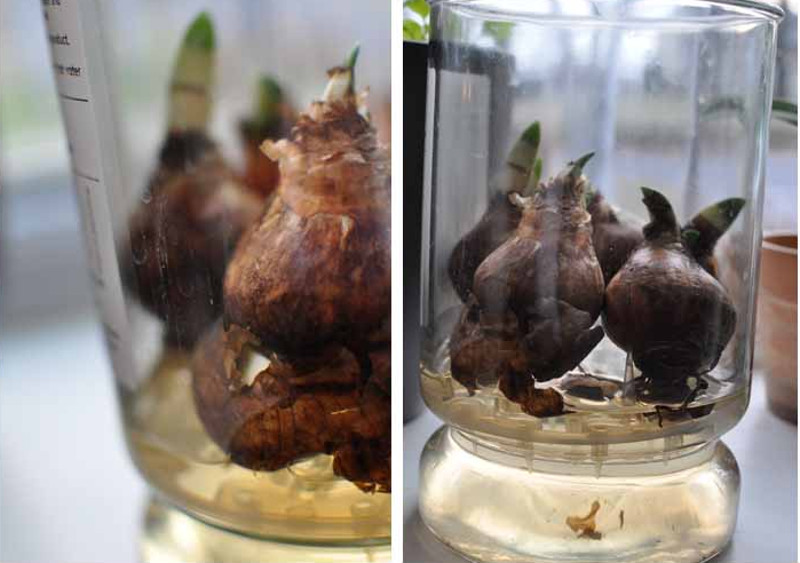
Update 1 week later: This is just the first of the paperwhite bulbs to bloom. There are two flower stalks on this bulb with lots of pretty white flowers.
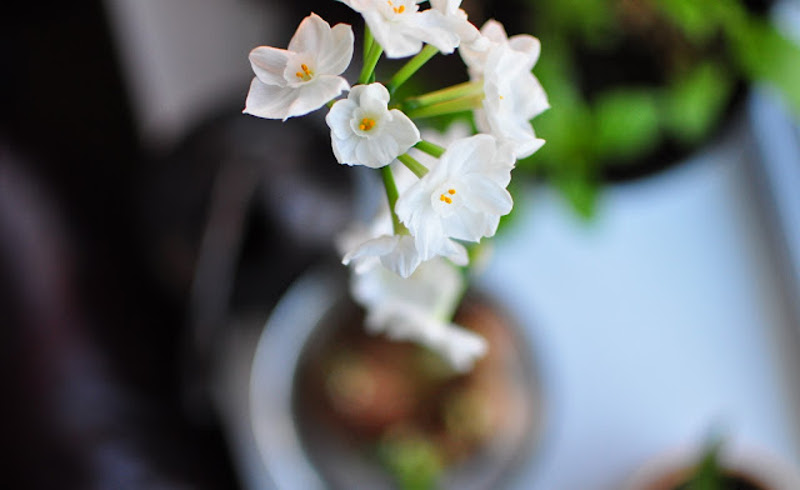
Forcing Bulbs In Soil
If you are new to forcing bulbs, you can always try to force them in soil first, which is easier and less prone to mistakes or killing the plants. Click on the link above to learn more!
 |
Author Chris Link - Published 10-24-2021 |
